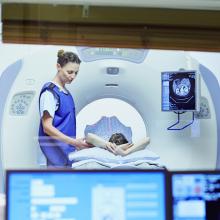
How to Achieve Radiation Dose Compliance As Imaging Exams Grow
After a brief decline, CT exams grew at a rate of nearly four percent annually for U.S. adults 2013-2016, according to a recent article in jamanetwork.com. Maintaining radiation dose compliance is a challenge as the use of medical imaging continues to grow. Yet it is a challenge that must be met: along with the growth of imaging exams comes the growth of adverse risk events.
As many hospital imaging departments are required to “do more with less”—tighter budgets and fewer staff— managing radiation dose compliance can stretch available resources. This is the time to consider the value of implementing a radiation dose management system that combines radiation dose monitoring software with the expertise of medical physics consultants.
As an end-to-end solution, the system will:
- Reduce the time staff spends on compliance management
- Provide actionable insights to improve image quality and minimize dose incidents
- Standardize radiation dose protocols and image quality across multiple sites
- Minimize false dose alerts
- Support continuous quality improvement
- Enable concise, easily retrievable documentation required by accrediting and regulatory bodies
- Minimize adverse risk events
- Support CT dose optimization as required by The Joint Commission revised diagnostic standards
A radiation dose management system can do more than maintain radiation dose compliance. It supports the goal providers of CT and fluoroscopy exams strive to meet: deliver the best possible patient care by attaining the highest medical image quality at the lowest possible radiation dose.

